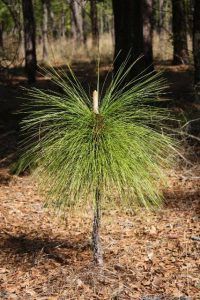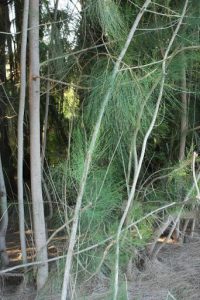
In Florida, pine trees are not only valued for their ecological importance, but for their economic importance as well. There are several species of pine found in Florida that are of commercial value, producing goods such as, paper, lumber and industrial chemicals. Many of these pines grow naturally and are managed to enhance wildlife habitats and other ecosystem services. Unmanaged pine stands will also benefit wildlife, but those benefits could be greatly increased with proper management techniques.
Florida’s native pines such as loblolly, longleaf, and slash pine, have a long history of commercial uses. Starting in the 19th century, the naval store industry employed thousands of people by operating large pine forests throughout the southeastern United States. Resin, collected from the planted slash and longleaf pines, was used to manufacture compounds for waterproofing wooden ships. However, after several decades, the use of resins was phased out as the steel industry took lead in manufacturing ships. Now, pine stands in the southeastern United States are mainly managed for the production of pulpwood and lumber.

Interestingly, not all pines that you see in Florida may even be true pines. Australian pine and the Norfolk pine, are two common pine look-a-likes that are found in the state. The Australian pine, in particular, is not even considered coniferous. These trees are native to Australia and originally were planted for flood prevention, landscaping, and potential use as timber in Florida. Unfortunately, it was evident that natural plant populations could be infiltrated and destroyed. This tree will crowd out other plants using a combination of heavy shade and thick surface roots, leading to dense, monocultured stands.
Please click here to read more about the Common Pines of Florida.
 1
1
